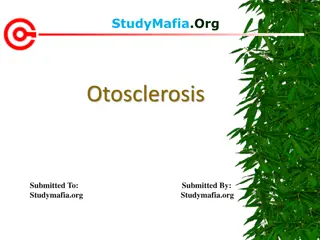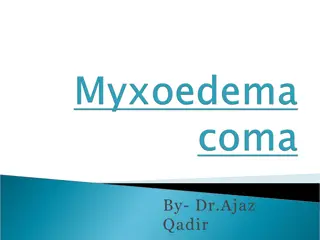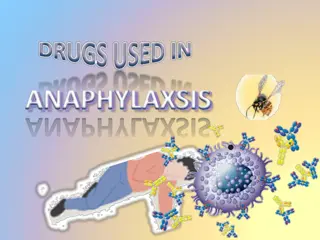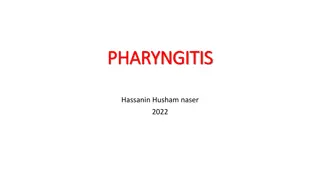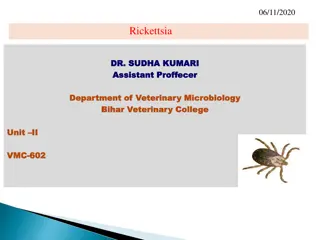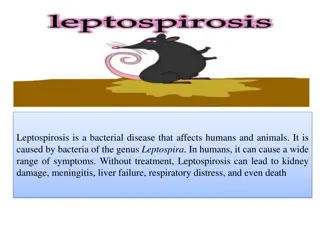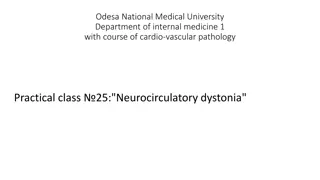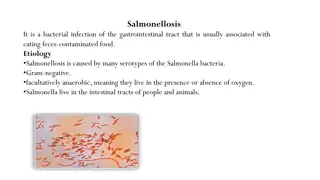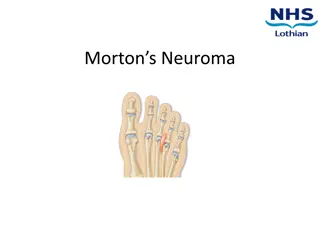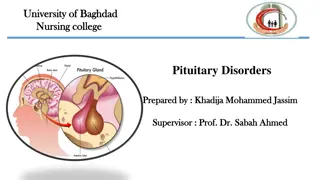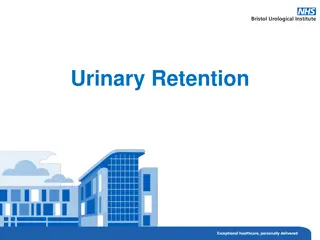Understanding Atrophic Rhinitis: Causes, Symptoms, and Diagnosis
Atrophic rhinitis is a progressive chronic condition characterized by the atrophy of nasal mucosa and turbinates. It predominantly affects young to middle-aged adults, with females being more prone. Commonly isolated bacteria include Klebsiella ozaenae and others. The pathophysiology involves metaplasia of nasal epithelium, leading to drying of nasal secretions and crust formation. Different types and risk factors, along with clinical features like halitosis and nasal obstruction, contribute to the complexity of this condition. Diagnosis is based on various investigations like anterior rhinoscopy and imaging techniques such as CT scans.
Download Presentation

Please find below an Image/Link to download the presentation.
The content on the website is provided AS IS for your information and personal use only. It may not be sold, licensed, or shared on other websites without obtaining consent from the author. Download presentation by click this link. If you encounter any issues during the download, it is possible that the publisher has removed the file from their server.
E N D
Presentation Transcript
Introduction. Introduction. A progressive chronic rhinitis caused by atrophy of the nasal mucosa and its underlying turbinates.
Epidemiology Epidemiology The condition is predominantly seen in young and middle aged adults, especially females (F : M = 5.6 : 1) . Its prevalence varies in different regions of the world. It is a common condition in tropical countries. In the countries prevalence, primary atrophic rhinitis can affect 0.3% 1.0% of the population. with higher
Etiology Etiology Commonly isolated bacteria are Klebsiella ozaenae,Diphtheroids,Proteus vulgaris,Escherichia coli,Staphylococci and Streptococci.
Pathophysiology Pathophysiology It results from metaplasia of ciliated columnar of nasal epithelium into squamous epithelium. This causes drying up of nasal secreations leaving behind a yellowish, greenish or blackish crusts with an offensive smell (Ozaena
Types Types Histopathological types Type I, Characterized by endarteritis and periarteritis. Type II,Characterized by vasodilation of capillaries. Clinical types Primary atrophic rhinitis,has unknown cause. Secondary atrophic rhinitis, it is acquired during lifetime of the patient
Risk factors Risk factors Family history of atrophic rhinitis Extensive nasal surgery Dietary deficiency Hormonal changes Nasal infection Autoimmunity Granulomatous
Clinical features Clinical features Halitosis Anosmia Evident Yellowish crusts. Nasal obstruction Frequent Epistaxis. Dry nose Roomy nasal cavity Choking attacks Depression.
Investigations Investigations Anterior rhinoscopy Nasal swab for culture and sensitivity Nasal smear for leprosy and tuberculosis X ray of paranasal sinuses CT of the nasal and paranasal region which will reveal atrophy of nasal mucosa and turbinates.
Treatment Treatment Nasal douching by warm isotonic saline Application of 25% glucose in glycerine Nasal drops Kemicetine antiozoenal solution Crust removal Surgery Young s operation, temporary closure of nostril and after a period of 6 to 9 months the flaps are opened up whereby the mucosa of the nasal cavities are found to be healed.
Complications Complications Nasal septal perforation Saddle nose deformity Nasal myiasis Chronic dacryocystitis
Prevention Prevention Proper treatment of granulomatous infections such as TB and Syphilis Proper dietary intake Early diagnosis and treatment

















